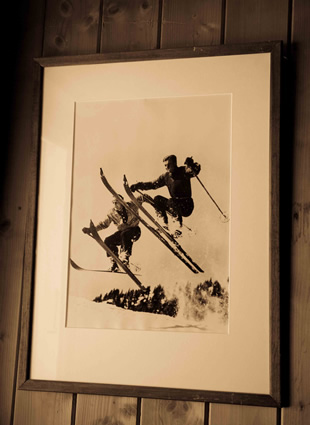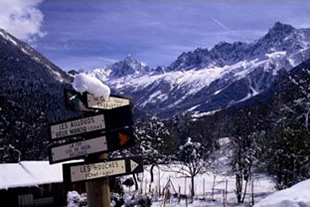Chamonix History
 Chamonix's history although intertwined with modern day alpinism, was first mentioned in the history books as far back as 1091 when the valley was given to the Abby of St. Michel de la Cluse in Italy. Then it was a rough, arduous place to inhabit and only the toughest of sheep farmers survived.
Chamonix's history although intertwined with modern day alpinism, was first mentioned in the history books as far back as 1091 when the valley was given to the Abby of St. Michel de la Cluse in Italy. Then it was a rough, arduous place to inhabit and only the toughest of sheep farmers survived.
Dominated by Europe's highest peak, the Mont Blanc, at 4807m, majestically reins over Chamonix town and has inspired poets (such as Shelley and Byron), climbers and mountain lovers for generations. In more modern times, the valley was 'discovered' by two Englishmen, William Windham and Richard Pococke who reached the Mer de Glace in 1761. Local mountain enthusiasts and scientists followed anxious to discover the atmosphere at the top of the Mont Blanc and in 1786 the first ascent of the Mont Blanc was completed by two locals, Jaques Balmat and Dr Joseph Vallot. A great achievement when you consider how basic their equipment must have been. Famous scientists Saussure, Goethe and Bourrit followed. In 1803 the first woman to ascend the Mont Blanc was Marie Paradis and in 1821 the famous 'Compagnie de Guides' was formed. Memories of those past hero's and heroines are echoed in the road names of the town and local villages.
In 1893 ski's started to appear and the town opened several hotels. In 1924 the very first winter Olympics were held here and soon the first ever package trip was organised by Arnold Lunn! The forerunners of modern day tourism! From 1927 onwards lifts were installed, at first just for sightseers, and in the late 50's and 60's two great engineering projects were completed, Europe's highest cable car, the Aiguille du Midi which serves France's longest ski run, La Vallee Blanche at 22km and the Mont Blanc road tunnel connecting France to Italy.
The modern day Chamonix valley still reflects the spirit of that pioneering time with some beautiful architecture, the Alpine Museum and the main church being notable examples. Progress has crept in and it's old architecture sits aside modern apartment complex's and hotels. The town, equally popular in both summer and winter is busy, bustling and energetic with a cosmopolitan make-up. Climbers, pitons clanking and snowboarders in baggy trousers stroll aside chic Italian ladies admiring the handbags in the Channel shop and taking tea in the patisserie's. There are 150 bars and restaurants, extensive shopping, a 10 pin bowling alley, sleigh rides in winter, indoor sports and tennis, swimming pool, ice-rink, 3 screen cinema, (shows English films too) and a casino which all combine to make this a lively and interesting destination for snow-lovers and non-skiers alike.
Above me are the Alps,
The palaces of Nature, whose vast walls
Have pinnacled in clouds their snowy scalps,
And throned Eternity in icy halls
Of cold sublimity; where forms and falls
The avalanche, the thunderbolt of snow.
All that expands the spirit, yet appals,
Gathers around these summits, as to show
How Earth may pierce to Heaven, yet leave vain man below.
BYRON

